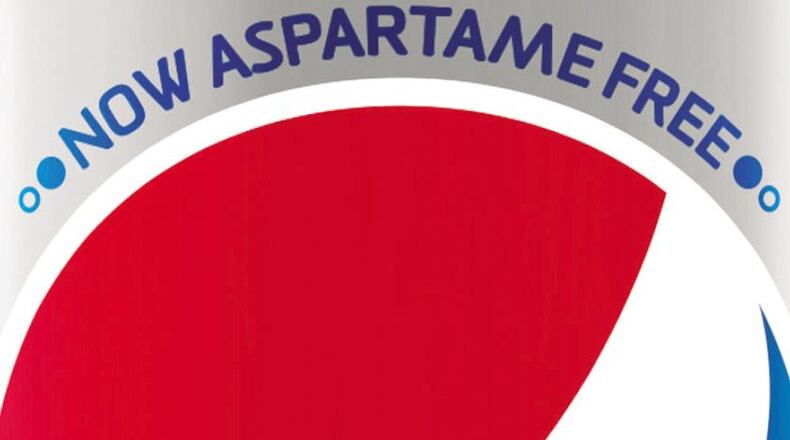You'll probably recognize them as the blue or yellow or pink packets next to the coffee machine, but the artificial sweeteners they contain aren't all the same inside.
In fact, Pepsi, the world's largest food and drink company, made the decision in 2015 to switch the artificial sweetener it uses in its diet sodas, citing their sagging sales figures and, by extension, the reputation attached to the aspertame inside them.
"Aspartame is the sweetener that seems to get most of the negatives in the press and on YouTube," Pepsi North America CEO Al Carey said at an investor conference in February.
The company will now use a blend of sucralose in Diet Pepsi, Caffeine Free Diet Pepsi and Wild Cherry Diet Pepsi.
There are actually six FDA-approved artificial sweeteners, what the agency calls "high-intensity sweeteners." Here's a guide.
Acesulfame potassium (Sunett, Sweet One) is about 200 time sweeter than sugar and is often consumed in conjuction with other sweeteners, according to the FDA. In 2003, it was approved as a general purpose sweetener and flavor enhancer; and the FDA cites 90 studies supporting its safety.
The acceptable daily intake, in milligrams per kilogram of body weight per day, is 15. So a person weighing 150 pounds could consume 1,020 milligrams daily, according to the FDA. The number of packets that would equal is 23
Advantame is about 20,000 times sweeter than sugar and was approved for certain use (foods except meat and poultry) in 2014, after the FDA reviewed data from 37 animal and human studies, among others, the agency said.
It is chemically similar to aspartame: Both contain phenylalanine, and aspartame should be avoided in large quanitities (or entirely) by people who cannot metabolize phenylalanine. However, advantame is much sweeter than aspartame, and so is usually consumed in much lower doses, according to the FDA — not carrying the same risk for people with phenylketonuria.
The acceptable daily intake, in milligrams per kilogram of body weight per day, is 32.8. So a person weighing 150 pounds could consume 2,232 milligrams daily, according to the FDA. The number of packets that would equal is 4,920.
Aspartame (Equal, NutraSweet, Sugar Twin) is about 200 times sweeter than sugar and is "one of the most exhaustively studied substances in the human food supply," according to the FDA, which adds that it is safe for the general population except certain conditions such as for those people with phenylketonuria.
The American Cancer Society adds, citing the positions of both the FDA and its European counterpart: "Though research into a possible link between aspartame and cancer continues, these agencies agree that studies done so far have not found such a link. ... (N)o health problems have clearly been linked to aspartame use."
The acceptable daily intake, in milligrams per kilogram of body weight per day, is 50. So a person weighing 150 pounds could consume 3,402 milligrams daily, according to the FDA. The number of packets that would equal is 75.
Saccharin (Necta Sweet, Sweet'N Low, Sweet Twin) is about 200-700 times sweeter than sugar and was first discovered in 1879, according to the FDA, making it the oldest approved artificial sweetener in the U.S.
It was considered safe for use for many decades after its discovery, until in the '70s it was linked with the development of bladder cancer in lab rats. But the FDA said saccharin is still safe for human consumption, citing more than 30 human studies since the cancer link was announced.
The acceptable daily intake, in milligrams per kilogram of body weight per day, is 15. So a person weighing 150 pounds could consume 1,020 milligrams daily, according to the FDA. The number of packets that would equal is 45.
Sucralose (Splenda) is about 600 times sweeter than sugar, according to the FDA, and was approved as a general purpose sweetener in 1999 after the agency reviewed more than 110 safety studies.
The acceptable daily intake, in milligrams per kilogram of body weight per day, is five. So a person weighing 150 pounds could consume 340 milligrams daily, according to the FDA. The number of packets that would equal is 23.
Neotame (Newtame) is about 7,000-13,000 times sweeter than sugar, according to the FDA, and was approved as a general purpose sweetener, under certain conditions, in 2002. The agency said it has reviewed more than 113 animal and human studies of neotame's possible effects on the body.
The acceptable daily intake, in milligrams per kilogram of body weight per day, is 0.3. So a person weighing 150 pounds could consume 20 milligrams daily, according to the FDA. The number of packets that would equal is 23.
About the Author
Keep Reading
The Latest
Featured


